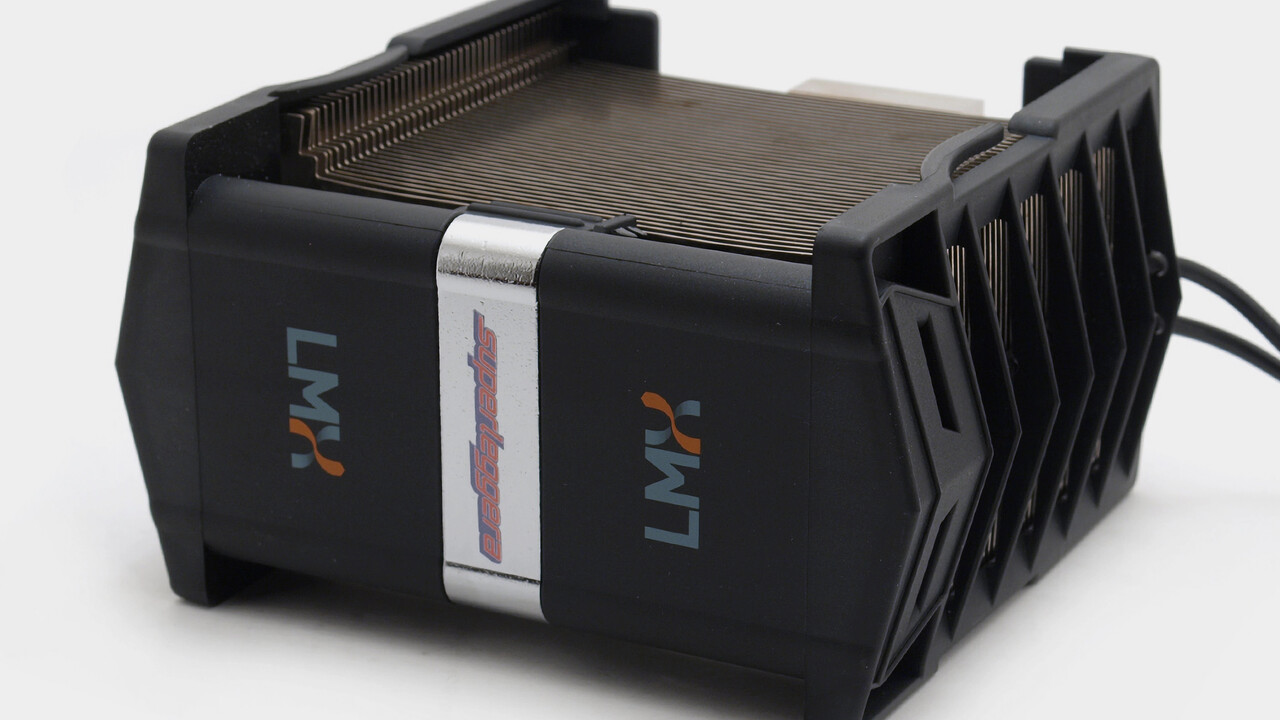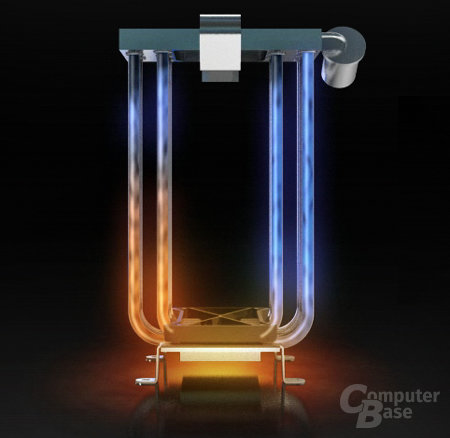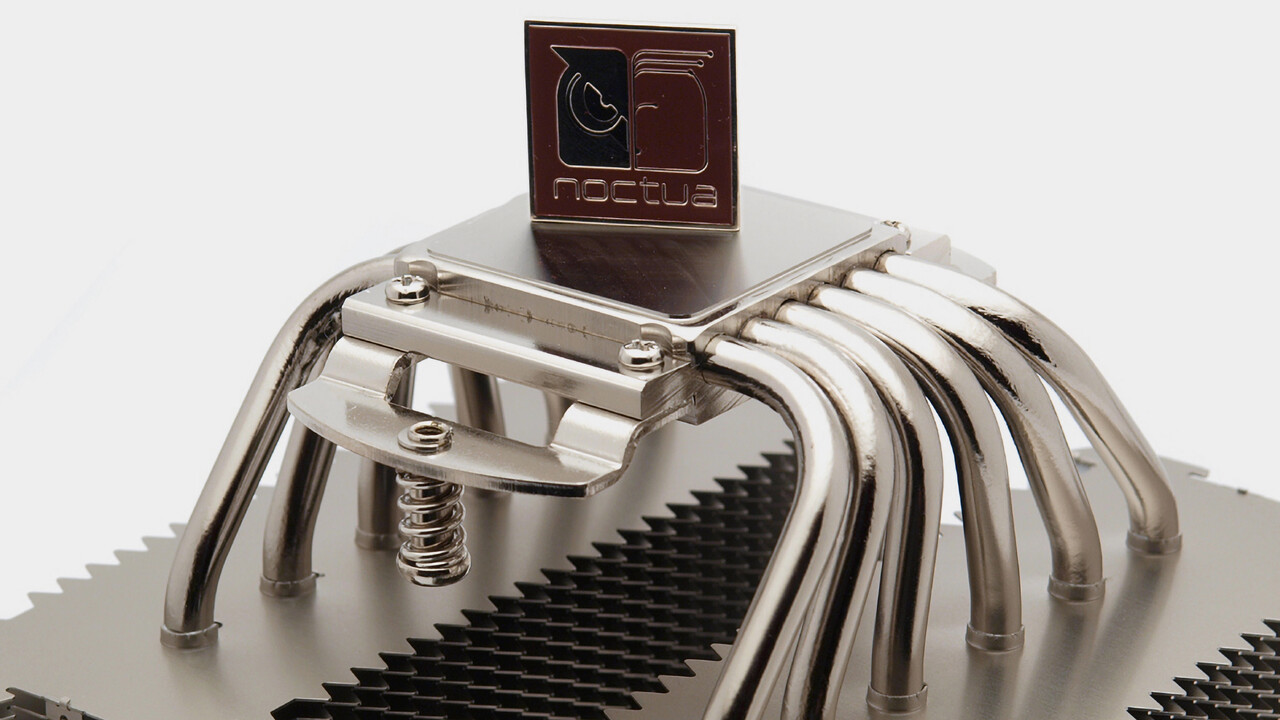In the test 15 years ago: LMX Superleggera with liquid metal instead of heat sinks 25 comments

The Danamics LMX Superleggera (test) was one of the first coolers to rely on liquid metal for heat transfer within the cooler. Although its predecessor, the LM10, faced so many problems that it never really appeared on the market, the LMX Superleggera should be a serious alternative.
Liquid metal in the cooler
Instead of using liquid metal for heat transfer between the cooler and the cooler today, LMX Superleggera was used internally. Conventional heat pipes used waste heat to force a phase transfer of the coolant within the heat pipe from liquid to gas, which then removed the waste heat to the heat sink where a renewed phase transfer took place.

Schematic Liquid Metal Cycle Image 1 of 11
The functionality of the LMX Superleggera, which was more like water cooling, was different. Inside the external heat pipe was a potassium sodium alloy that was liquid in a temperature range of -12.6°C to 785°C. To transport waste heat from the cooler’s base plate through the five circuits to the heat sink, a pump was used, as with water cooling, and unlike conventional heat sink coolers, a pump. In the case of the LMX Superleggera, this was an electromagnetic pump on top of the cooler. Usually, electromagnetic pumps have very high currents and strong magnetic fields, but for obvious reasons, this was problematic in a PC. The electromagnetic pump developed by Danamics came with a power consumption of less than one WATT, while the rest of the hardware was protected by an iron core shield around the cooler. With the unusual technology, the physical footprint of the cooler, which was truly enormous with dimensions without fan of 158.2 × 90 × 170.5 mm (L × W × H) and a weight of 1,170 grams. The waste heat was released from the 42-slat liquid metal circuits at a distance of approx. 2 mm and removed from there with up to two 120 mm fans. Despite the very high price of 119 euros, none of these fans were included in the scope of delivery. In terms of compatibility, users had to decide before purchasing whether they wanted to purchase the Intel version (LGA 775, 1156 and 1366) or the AMD variant (AM2, AM2 +, AM3). To run the electromagnetic pump, the cooler was included in a power supply unit that was located in a 3.5-inch shaft.
Due to the high weight of 1.5 kg when using two 120 mm fans, assembly was carried out via a backplate. Due to the many small parts, installing the cooler was a little more time-consuming than usual. The installation height of 170.5 mm also caused problems with most cases.
Good performance in the upper midfield
In the test, the LMX Superleggera had to prove itself on a Core i7-920 in both standard (2.66 GHz, 1.2 V) and performance mode (3.4 GHz, 1.4 V). Regardless of the fan used, it delivered good, but not the best, performance. Very good air coolers with proven heat pipe technology, such as the Prolimatech MegaHalems or the Noctua NH-D14, were on par with the LMX Superleggera. The cooler left the crushing and fell considerably, particularly in semi-passive mode.
Conclusion
At the end of the test, it was clear that the LMX Superleggera was a very good cooler. Despite its new and exotic technology, however, it was unable to oust the proven competition from the top positions. As a result, due to the high price of €119 without a fan, the cooler was only recommended for a few users.
In the “Tested 15 Years Ago” category, the editorial team has been reviewing the test archive every Saturday since July 2017. We list the last 20 articles published in this series below:
Multi-GPU with NVIDIA and AMD thanks to Hydratel Core i7-980X as the first processor with six kernels Sparkling Pentium G6950 and Core i3-530. 1,024 MBYTE DDR3 was Sinnlosamds Radeon HD 5670 Bot DirectX 11 for 79 Eurohtcs Touch2 was a savings smartphone for 270 Euroder Advantage of SSDS in the Alltamrazers Orochi for Mobile Fun via BluetoothBlackBerry Bold 9700 was a wanneger Geneer Smartphonew Super Maro Bros. 240 on the Wii was the ultimate CPU CPU. 5750 A recommendation: Einamd’s Eyefinity had fun with three Satis Radeon HD 5750 displays, despite the €115 RRP being too expensive.
Even more content like this, and many other reports and anecdotes, can be found in the Retro Corner of the TechAstuce forum.
Topics: Retro Cooling

A cooling systems specialist, Sophie helps enthusiasts optimise their setups with watercooling.


